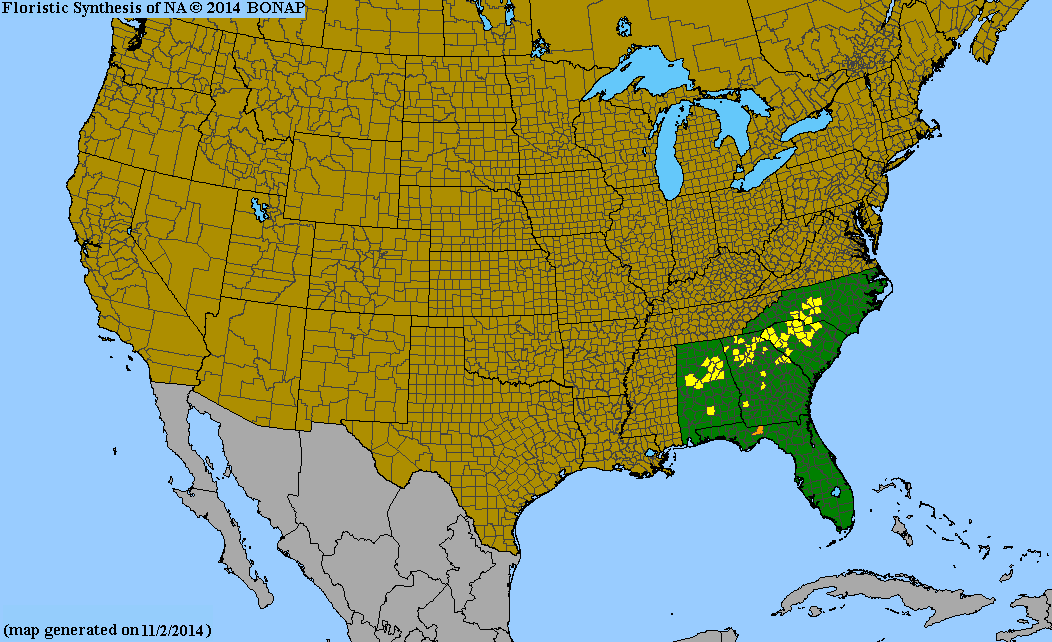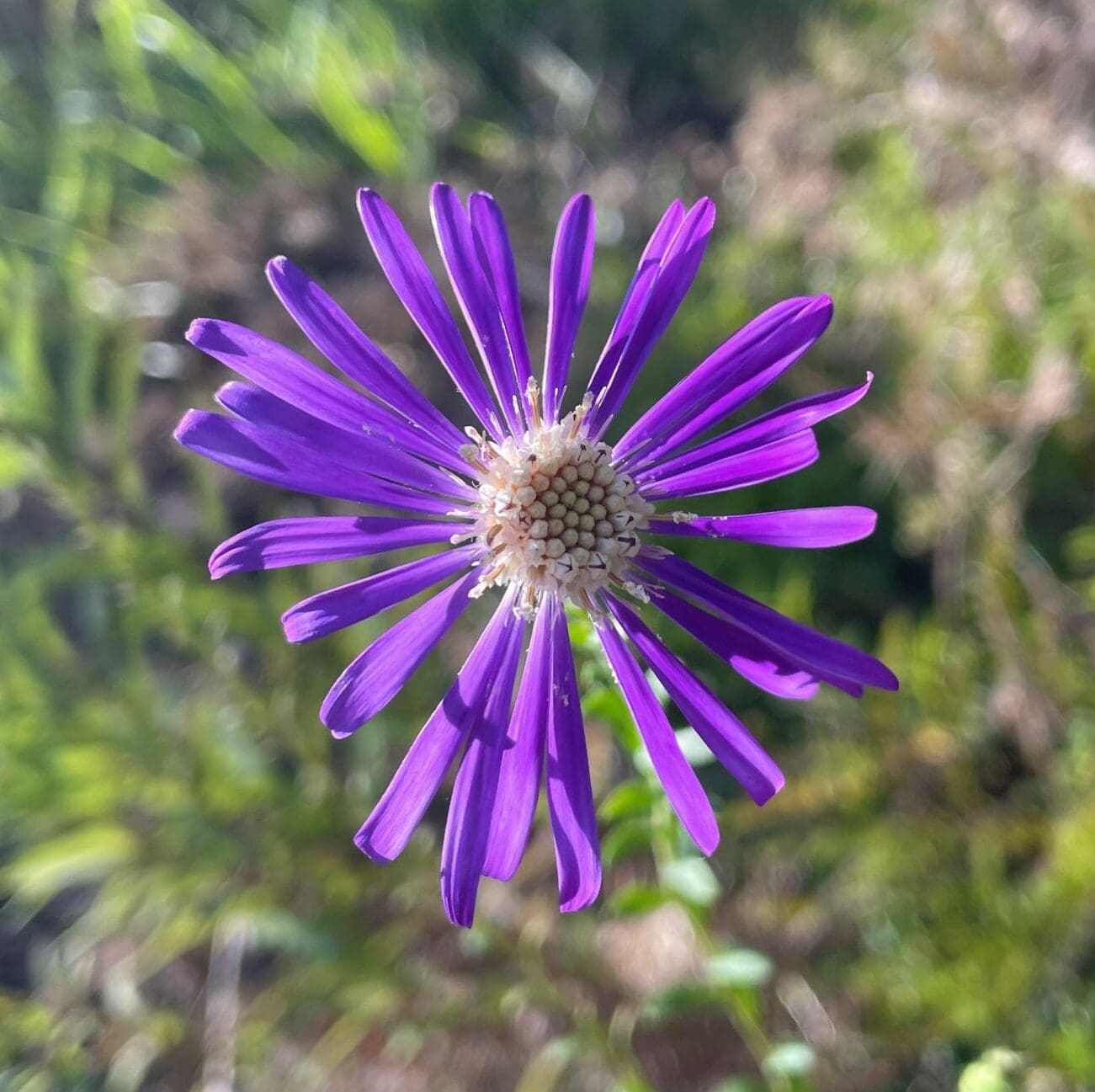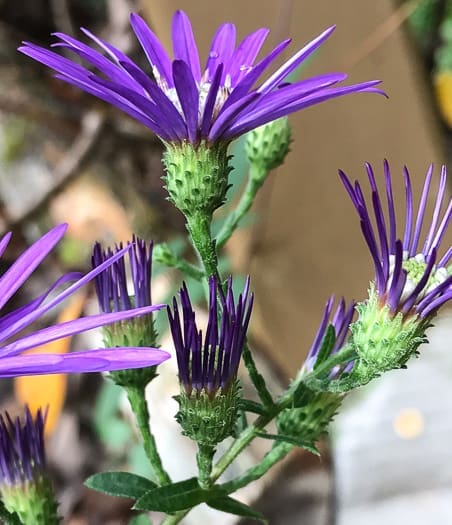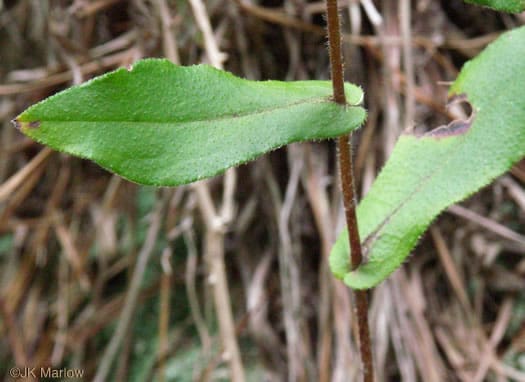Asteraceae
Georgia aster
Symphyotrichum georgianum
Synonyms
Aster patens var. georgianus
Aster patens
Aster georgianus
Virgulus georgianus
Plant Type
Herbaceous Wildflower
Life Cycle
Perennial
Typical Size
1.5-3 ft. tall
3-4 ft. wide
Tolerant of
Drought
Inolerant of
Poorly Drained Soil
Propagation
By seed, By cutting, By division
Plant Propagation Notes
Cross pollination is required for viable seed. Seed requires up to 3 months cold moist stratification. Cuttings take best when more than one node is under the propagation media.
Plant Planting Notes
Spreads by rhizomes, so provide enough space for approximately 3-4 ft of spread.
Plants/Diseases
No significant disease or pest issues.
Wildlife Benefits
Nectar/pollen source for pollinating insects
Leaves
Leaves alternate, simple, and clasping the stem; hairy.
Flowers
Composite “heads” with disc and ray flowers. Ray flowers long, narrow, and dark purple.
Fruit
Achene
Bark
Stems are hairy and brown/copper in color.
Toxicity
No known toxicity.

USDA Hardiness Zones
3, 4, 5, 6, 7, 8, 9
Light Exposure
Full Sun
Soil Moisture
Dry, Medium
Soil Drainage
Well-drained
Soil pH
Acidic (less than 6.0), Neutral (6.0-8.0)
Native in South Carolina?
Yes
Plant Native Habitat
Dry, rocky woodlands, disturbed open habitats; particularly areas that would have experienced wildfire/controlled burns.
Global Conservation Status (NatureServe)
Vulnerable (G3)
Federal Conservation Status (USFWS)
Not Listed
Distribution Notes
Considered threatened in South Carolina and rare throughout the state.



